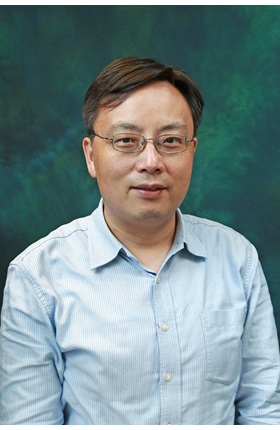Feng Yan
Perovskite & Organic devices
Department of Applied Physics, The Hong Kong Polytechnic University, Hong Kong
Email: apafyan@polyu.edu.hk
Biography
Prof. Feng Yan received his Ph.D. degree in physics from Nanjing University in, 1997 and has been an associate professor of Physics at Nanjing University since January 2001. He joined the Department of Engineering, University of Cambridge as a research Fellow in February 2001. He joined NPL in April 2006 as a Senior Research Scientist. He was appointed assistant Professor in the Department of Applied Physics of the Hong Kong Polytechnic University in September 2006 and was promoted to full Professor in 2016. His research interests include organic electronics, two-dimensional materials, solar cells, thin film transistors, biosensors and smart materials.
Abstract for Presentation
Strategies for achieving high-performance Sn-based perovskite solar cells
Tin-based perovskites are promising candidate materials for efficient lead-free perovskite solar cells (PSCs) due to their excellent optoelectronic properties and suitable bandgaps. However, it is challenging to prepare highly stable and efficient tinbased PSCs because Sn2+ in perovskites can be easily oxidized to Sn4+ upon air exposure. Many effective approaches have been developed to improve the device performance and a power conversion efficiency of over 14% has been achieved. In this talk, I will introduce the fabrication of air-stable FASnI3 PSCs by adding hydroxybenzene sulfonic acid or gallic acid as antioxidant agents into the perovskite precursor solution along with excess SnCl2. The interaction between the additives and SnCl2 promote their homogenous dispersion in the perovskite film. Moreover, the strong antioxidant capacity of the additives enables enhanced oxidation stability of FASnI3. The corresponding PSCs can maintain 80% of the efficiency over 1000 h upon air exposure without encapsulation, which is over ten times longer than the best result reported before. Our results suggest a novel strategy for the design of efficient and stable tin-based PSCs.
References
[1] J. P. Cao, H.-L. Loi, Y. Xu, X. Guo, N. Wang, C. K. Liu, T. Wang, H. Y. Cheng, Y. Zhu, M. G. Li, W. Y. Wong, Feng Yan*, Adv. Mater. 34, 2107729 (2022).
[2] J Cao, Feng Yan*, Energy Environ. Sci. 14 (3), 1286-1325, (2021).
[3] Q Tai, X Guo, G Tang, P You, TW Ng, D Shen, J Cao, CK Liu, N Wang, Ye Zhu, Chun-Sing Lee, Feng YAN*, Angew. Chem.-Int. Edit. 58, 806-810 (2019).
WELCOME TO CHINA TO ATTEND THE ICANS
23-26 August, Nanjing, China
Connect with us:



